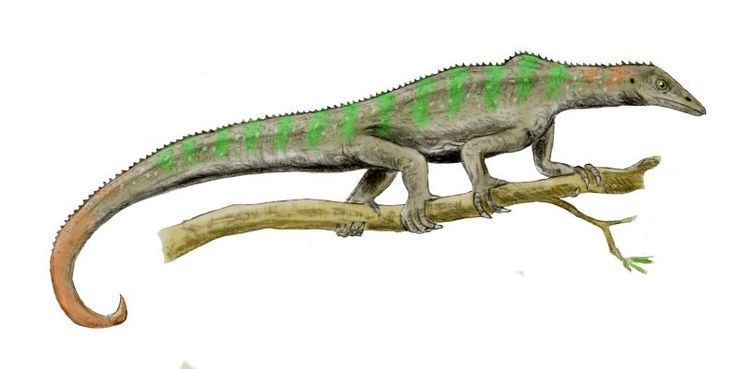Class Reptilia Rank Genus | Phylum Chordata Clade Archosauriformes | |
 | ||
People also search for | ||
Tsylmosuchus is an extinct genus of archosauriform reptile. It is known from the southern Urals region of Russia. Tsylmosuchus occurred throughout the Olenekian age of the Early Triassic. Some of the strata from which Tsylmosuchus has been found are Induan in age, making it one of the earliest archosaurs. The genus is named after the Tsilma River, near where fossils have been found. Three species have been named, all based on single incomplete specimens: the type species T. jakovlevi, T. samariensis, and T. donensis. Tsylmosuchus was originally classified among crocodile-line archosaurs (pseudosuchians) as part of the family Rauisuchidae; however, the fragmentary remains do not show any of the distinguishing features of rauisuchids or even pseudosuchians in general, so Tsylmosuchus has more recently been interpreted as an indeterminate archosauriform. Given the lack of diagnostic material for the three species that have been named, they are also probably not distinct from each other.
Contents
Description
Tsylmosuchus is known primarily from vertebrae. These vertebrae are similar to those of rauisuchids from East Africa. Like several early rauisuchians, such as Energosuchus and Vytshegdosuchus, Tsylmosuchus has elongated cervical vertebrae, giving it a relatively long neck.
Nesbitt (2009) suggested that elongated cervical vertebrae were present in numerous archosauriform clades, and that the length of the cervical vertebrae depended on the position in the presacral column, as seen in the poposauroid Arizonasaurus and the non-archosaurian archosauriform Guchengosuchus. The holotypes of each of the three species consist of a single cervical vertebra, which does not bear any other clear autapomorphies. Furthermore, the material referred to these species cannot be shown to belong to the same taxa as the holotypes. Thus, Nesbitt (2009) considered all three species to represent invalid archosauriforms.
Species
The type species, T. jakovlevi, was named in 1990. It is known from many vertebrae and a few partial illia collected around the Mezen and Pechora Rivers in northern European Russia. Some material once referred to the proterosuchid Chasmatosuchus magnus has since been referred to this species.
Two other species were named and described alongside the type. T. samariensis is known from a few vertebrae from the region of Obshchy Syrt. T. donensis is known only from a cervical vertebra and was thus only tentatively named as a distinct species. It has been found from Donskaya Luka in Volgograd Oblast.
Paleobiology
Along with small proterosuchids, such as Chasmatosuchus, Tsylmosuchus and its close relatives were the top predators in Early Triassic European Russia. Tsylmosuchus was part of what are referred to as the Benthosuchus-Wetlugasaurus and Parotosuchus faunas, which are early and late Olenekian in age, respectively. These faunas, known from hundreds of sites throughout eastern Europe, consisted of a wide array of temnospondyls (primarily trematosaurids), procolophonids, and early archosauriforms. These faunas occurred in a large river basin, which likely experienced a trend of increasing humidity during the later part of the Olenekian.
